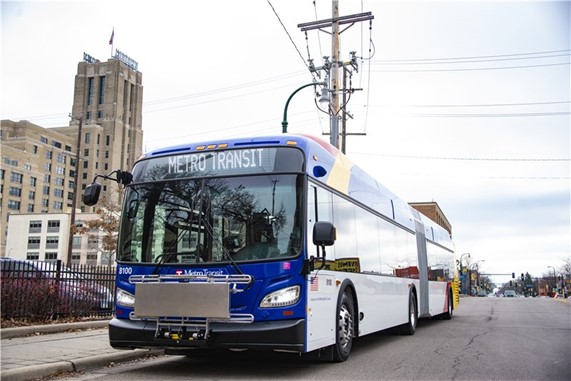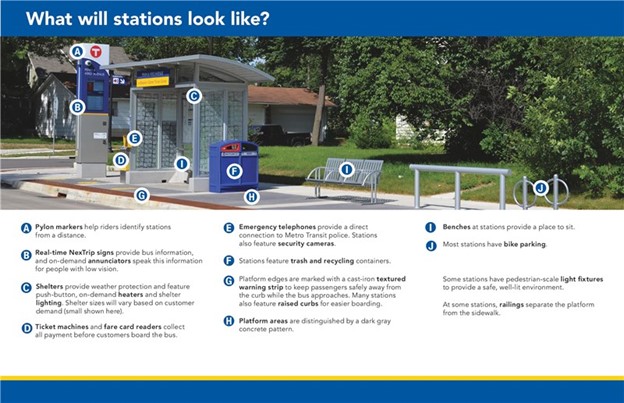Frequently Asked Questions
What is the METRO E Line?
The METRO E Line is a planned bus rapid transit line, like the A Line and C Line, that will provide faster and more reliable transit service in the Route 6 corridor along Hennepin and France Avenues.
Why was the Route 6 corridor selected for bus rapid transit service?
Before the pandemic, customers took more than 8,000 daily rides on Route 6, making it one of Metro Transit's busiest bus routes. Buses carry approximately 45% of people traveling on segments of Hennepin Avenue but make up less than 3% of vehicle traffic. Hennepin Avenue is also one of the slowest transit corridors in the region. During rush hours, buses move at an average speed of 8 miles per hour. Frequent stops and red lights mean that buses are delayed in traffic.
How much faster will E Line service be compared to Route 6?
The goal of the E Line is to make service approximately 20% faster than current travel time by stopping less often, allowing customers to board faster, and stopping at fewer red lights. Similar travel time improvements have been achieved on the A line and C Line.
How will future bus service levels compare with today's Route 6?
Based on preliminary recommendations, E Line service would run every 10 minutes, seven days a week, during the day and most of the evening.
Local service on Route 6 would run every 30 minutes on the portion on Xerxes and Hennepin Avenues from Minnesota Drive and France Avenue to Uptown Transit Station. This would maintain the existing level of service and connections to downtown on Xerxes Avenue.
Planning for bus service will continue as the E Line is designed and built.
What will be the frequency and hours of service?
The E Line will provide frequent service all day on weekdays, Saturdays, and Sundays. Exact schedules and service plans will be formed closer to the E Line's opening in 2025.
What will will E Line buses look like?

The E Line will use recognizable 60-foot "articulated" buses with wider aisles, more seating capacity, and additional doors so more people can get on and off easily.
How will fares be collected on the E Line?
E Line customers will pay before boarding for faster stops using ticket vending machines or validators at the station, or using Metro Transit's app on their smartphone. Customers enter the bus through any door, speeding up the boarding process. Metro Transit officers will check fare payments.
What features will E Line stations include?
E Line station features include:
- Real-time NexTrip signs with on-demand audible announcements
- Shelter lighting
- Push-button heating
- Containers for garbage and recycling
- Security cameras
- Emergency telephones
- Benches
- Bike Parking

How is the project funded?
The E line is fully funded through a mix of federal, state, and Metropolitan Council funds. The preliminary estimated cost of the project is $60 million. Cost estimates will be further refined as the project is developed.